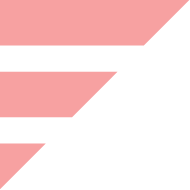

From workarounds to working together
How one university turned complexity into coherence, by redesigning professional services to…
Read more
Story



In a business built on precision, performance, and scale, the people architecture had become… unwieldy.
Over time, the organisation’s career and reward frameworks had grown dense and convoluted. 11 job layers. More than 8,000 roles in scope. Over 200 job types. And no fewer than 240 distinct salary scales, each with their own rules, histories and exceptions.
Internally, the system signalled hierarchy. But externally, it was out of step with the skills, agility and talent experience the modern organisation needed.
As the business moved into a new strategic cycle, driven by digital transformation and changing workforce expectations, the cracks became clear:
The system wasn’t just complicated. It was in the way.
We worked side by side with HR leaders, functional heads and employee reps to design a unified, future fit Career and Reward Framework, one that could handle the scale and complexity of the organisation, while also enabling growth, movement and transparency.
At the heart of the change was a streamlined seven band progression structure, supported by four clearly defined career pathways. This replaced the 11 layer legacy model, mapping over 8,000 roles and 200 job types into a consistent, capability based framework.
Each pathway, whether for technical experts, people leaders, project managers or enterprise influencers, was underpinned by defined role expectations, progression criteria, and development guides. The goal: make careers visible, navigable and real.
On the reward side, we simplified a fragmented architecture of 240+ salary scales into a coherent model aligned with the new bands. We removed legacy features like guaranteed increments and aligned pay progression with demonstrated capability and contribution, creating space for fairness, flexibility and future readiness.
It wasn’t just a design exercise. It was a change journey.
We prepared for Industrial Relations conversations, supported leaders through tough trade offs, and developed internal communication tools that helped employees see not just what was changing, but why it mattered.



This was complexity handled, not hidden.
For a workforce used to legacy logic, this was a new way of thinking about value, where growth wasn’t something you waited for, it was something you stepped into.
And for leaders, it became a foundation for future talent conversations, not just about who fits where, but who’s growing, what’s next, and how we build capability for what’s coming.
"The work helped us reimagine how careers and contribution are recognised across our organisation. Along with deep expertise, a structured yet simple approach and excellent ability to engage diverse stakeholders, Futurus gave us the confidence to simplify the complex and lay the foundations for a more capable and agile workforce."
Chief People Officer